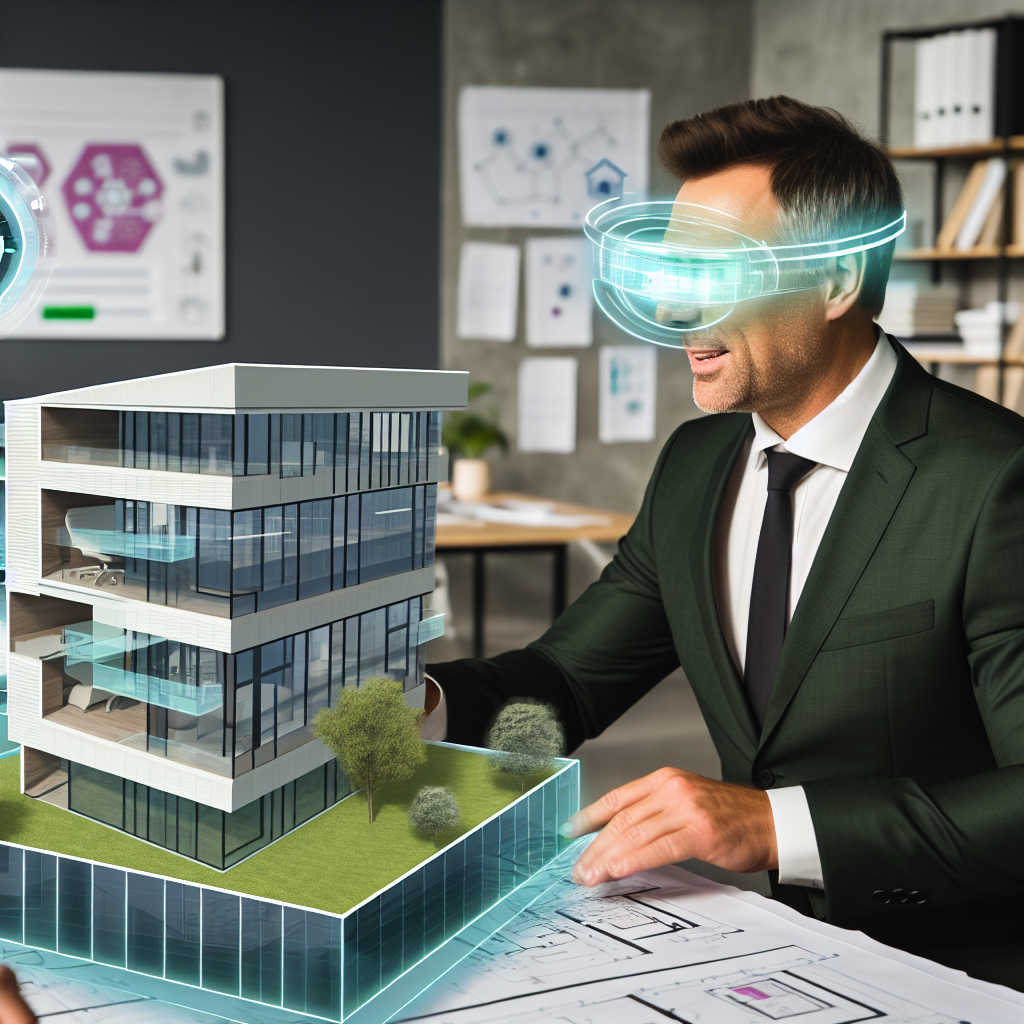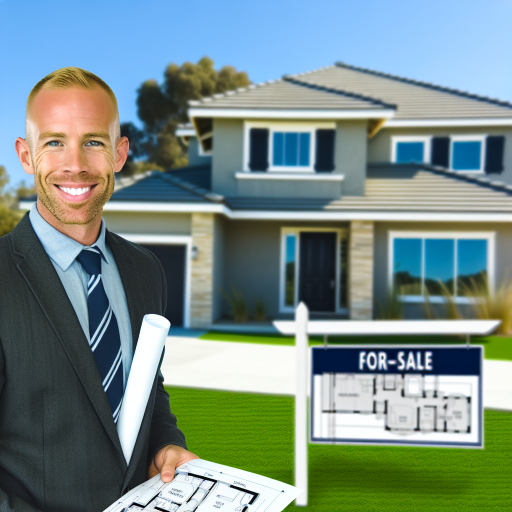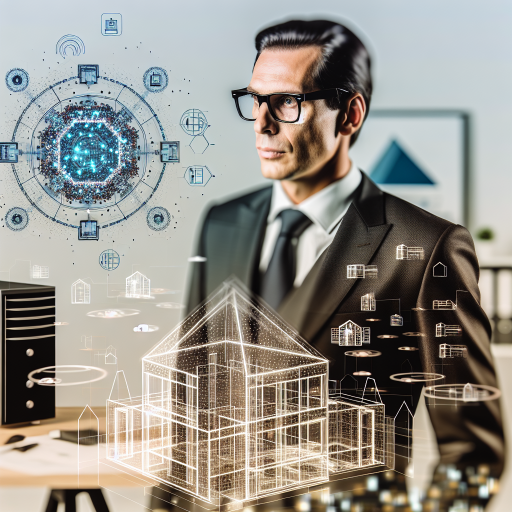Definition and Overview of Smart Buildings
Smart buildings integrate advanced technologies to enhance operational efficiency.
They utilize Internet of Things (IoT) devices for monitoring and managing systems.
This includes lighting, HVAC, security, and energy consumption.
Consequently, they offer improved comfort for occupants and better resource management.
Key Features of Smart Buildings
Smart buildings are characterized by several key features.
- Automated control systems optimize energy usage.
- Sensors provide real-time data for efficient monitoring.
- Smart meters track energy consumption accurately.
- A centralized management system integrates all functions.
- Seamless connectivity allows for remote access and control.
Benefits of Smart Buildings
Smart buildings deliver numerous advantages to property owners and occupants.
- They significantly reduce operational costs through energy efficiency.
- Occupants enjoy enhanced comfort and convenience.
- Environmental impacts are minimized through reduced energy consumption.
- They increase asset value and appeal to potential buyers or tenants.
The Role of PropTech in Smart Buildings
PropTech plays a crucial role in the development of smart buildings.
Innovative technologies drive building automation and management solutions.
This fosters enhanced interactions between property managers and tenants.
Furthermore, PropTech solutions contribute to data-driven decision-making processes.
As a result, they maximize efficiency and improve overall building performance.
The Role of PropTech in Transforming the US Real Estate Market
Understanding PropTech
PropTech refers to technology in the real estate sector.
This innovation enhances how properties are bought, sold, and managed.
By automating processes, PropTech increases efficiency significantly.
Moreover, it provides valuable data for informed decision-making.
Impact on Property Management
Property management is experiencing a transformation through PropTech.
Smart building technologies enhance energy efficiency and sustainability.
These technologies facilitate predictive maintenance and real-time monitoring.
As a result, property owners can reduce operational costs effectively.
Changing the Investment Landscape
PropTech is also reshaping real estate investments.
Online platforms enable fractional ownership and democratize access to real estate.
Investors can now participate in previously inaccessible markets easily.
Additionally, big data analytics helps investors identify trends and risks.
Streamlining Transactions
Transactions in real estate are becoming faster and more transparent.
Smart contracts simplify the buying and selling process.
This technology minimizes the need for intermediaries and reduces costs.
As a result, buyers and sellers gain a more efficient experience.
Enhancing Tenant Experiences
PropTech significantly improves tenant experiences in rental properties.
Smart technologies allow for seamless access control and automated services.
Tenants benefit from enhanced security and convenience systems.
This leads to higher satisfaction rates and lower turnover for landlords.
Future Trends in PropTech
The future of PropTech appears promising and innovative.
Artificial intelligence will play a pivotal role in property management.
Moreover, virtual reality is transforming property viewing experiences.
As trends evolve, stakeholders must adapt to stay competitive.
Key Technologies Driving the Rise of Smart Buildings
Internet of Things (IoT)
The Internet of Things (IoT) plays a vital role in smart buildings.
It connects various devices and systems to enhance automation.
This connectivity allows for real-time data collection and analysis.
As a result, it optimizes energy consumption and resource management.
Moreover, IoT improves security through enhanced surveillance systems.
Smart sensors can detect occupancy and adjust lighting accordingly.
They also monitor environmental conditions for better comfort.
Companies like SmartSpace are leading innovations in this area.
Artificial Intelligence (AI)
Artificial Intelligence (AI) is revolutionizing smart building operations.
It analyzes large datasets to predict maintenance needs.
This proactivity reduces downtime and operational costs.
AI algorithms enhance energy efficiency by learning habits.
The technology can suggest optimal settings for HVAC systems.
Furthermore, AI-powered chatbots assist with tenant inquiries.
They provide instant responses, increasing tenant satisfaction.
Firms such as BuildingIQ provide AI solutions tailored for buildings.
Building Management Systems (BMS)
Building Management Systems are central to smart building functionality.
A BMS integrates all building systems under one interface.
This unification simplifies monitoring and control operations.
Furthermore, BMS can generate analytics for performance improvement.
They also facilitate energy management and compliance reporting.
As a result, properties can achieve sustainability certifications.
Honeywell is a prominent player in BMS technology.
Advanced Energy Management Solutions
Energy management solutions significantly reduce operational costs.
Smart meters provide granular data on energy usage.
This data allows managers to identify inefficiencies swiftly.
Subsequently, they can implement strategies for energy conservation.
Solar panels and battery storage systems enhance energy resilience.
Moreover, predictive analytics optimize energy sourcing and usage.
The integration of renewable sources is becoming standard practice.
Companies like EnergyHub specialize in these solutions.
Gain More Insights: The Impact of Mobile Apps on Homebuying and Selling Experiences
Benefits of Smart Buildings for Property Owners and Tenants
Enhanced Energy Efficiency
Smart buildings utilize advanced technology to optimize energy usage.
This reduces operational costs for property owners significantly.
Tenants enjoy lower utility bills, which enhances their overall satisfaction.
Furthermore, energy-efficient systems contribute to sustainability goals.
Increased Property Value
Smart buildings tend to attract higher rental rates and buyers.
Integrated technology makes properties more appealing in the market.
This attracts savvy investors seeking modern features.
Consequently, property owners see an increase in asset value.
Improved Safety and Security
Smart technologies enhance building security through advanced surveillance.
Automated alarms and access control systems protect properties effectively.
Tenants feel safer knowing security features are up to date.
Property owners can reduce the chance of insurance claims.
Enhanced Tenant Experience
Smart buildings offer unprecedented convenience to tenants.
Features like smart thermostats allow personalized climate control.
Automated lighting can improve the ambiance and productivity of spaces.
Moreover, mobile apps can streamline communication with property management.
Operational Insights and Analytics
Smart buildings provide data about energy usage and occupancy patterns.
This allows property owners to make informed maintenance decisions.
Real-time analytics contribute to identifying areas for efficiency improvements.
As a result, operational costs can be minimized effectively.
Environmental Impact Reduction
Smart buildings play a crucial role in reducing carbon footprint.
They utilize renewable energy sources effectively, promoting sustainability.
Tenants are increasingly prioritizing eco-friendly living spaces.
This trend influences property owners to adopt green technologies.
Uncover the Details: The Growing Influence Of Virtual Reality In Real Estate Through PropTech
Impact of Smart Buildings on Energy Efficiency and Sustainability
Enhancing Energy Efficiency
Smart buildings utilize advanced technologies to monitor energy consumption.
They adjust energy usage based on real-time data and user behavior.
This leads to significant reductions in energy waste.
For instance, smart lighting systems can automatically dim or brighten based on occupancy.
Heating, ventilation, and air conditioning systems can also optimize performance.
Moreover, smart building solutions contribute to lower operational costs.
As a result, owners enjoy financial gains while promoting efficiency.
Supporting Sustainability Initiatives
Smart buildings play a crucial role in sustainability efforts.
They often integrate renewable energy sources, such as solar panels.
This integration reduces reliance on fossil fuels.
Additionally, smart management systems optimize resource consumption.
They track water usage, minimizing waste in the process.
Furthermore, these buildings can adapt to extreme weather conditions.
This resilience contributes to sustainable urban development.
Improving Indoor Environmental Quality
Smart building technologies enhance indoor environmental quality.
These systems ensure optimal air quality by monitoring pollutants.
They can automatically adjust ventilation rates based on occupancy levels.
Moreover, advanced sensors help maintain comfortable temperature levels.
As a result, occupants experience improved comfort and health.
This quality of life enhancement encourages sustainable living practices.
Driving Market Demand for Green Buildings
The demand for smart buildings continues to grow in the real estate market.
Investors and occupants seek properties that promote energy efficiency.
Consequently, developers are prioritizing sustainable, smart building features.
This trend influences property values positively.
Moreover, it aligns with the increasing consumer preference for sustainability.
As such, the integration of smart technologies proves beneficial for all stakeholders.
Learn More: Smart Home Technology For Enhancing Home Energy Efficiency

Challenges Faced in Implementing Smart Building Technologies
Technological Integration
Integrating various technologies poses a significant challenge.
Many systems operate on different platforms and protocols.
This creates compatibility issues during installation.
Moreover, legacy systems often resist modernization.
Upgrading existing infrastructure can be costly and complicated.
High Initial Costs
The initial investment for smart building technology can be daunting.
Property managers may hesitate to allocate large budgets upfront.
Despite long-term savings, short-term expenditures worry stakeholders.
Additionally, financing options may not always be favorable.
Data Security and Privacy Concerns
Data security remains a primary concern for many users.
Vulnerabilities in connected systems can lead to cyber threats.
Moreover, personal data collection raises privacy issues.
Regulatory compliance adds another layer of complexity.
Lack of Skilled Workforce
The smart building industry lacks a sufficiently skilled workforce.
Training programs need to address this skills gap effectively.
Industry professionals must adapt to rapidly changing technologies.
Furthermore, this shortage can delay project implementation.
Resistance to Change
Resistance from stakeholders hinders the adoption of smart technologies.
Many individuals prefer traditional building methods.
This attitude can stall progress and innovation.
Effective communication about benefits is essential to overcome resistance.
Regulatory and Compliance Issues
Regulatory challenges can complicate the implementation process.
Building codes may not yet accommodate smart technologies.
Staying compliant while adopting new systems requires careful planning.
Moreover, navigating these regulations can be time-consuming.
Delve into the Subject: Understanding Smart Thermostats For Efficient American Residential Energy Use
Case Studies of Successful Smart Buildings in the USA
The Edge – New York City
The Edge is a trailblazing smart office building in New York City.
This 30-story structure features advanced energy management systems.
Additionally, its innovative design promotes collaboration among tenants.
Moreover, the building reduces energy consumption through smart technologies.
This approach significantly cuts operational costs for its occupants.
Salesforce Tower – San Francisco
Salesforce Tower stands tall as an icon of smart building technology.
It uses real-time data analytics to optimize energy usage.
This capability enhances comfort for tenants while minimizing waste.
The building also offers a range of wellness-focused amenities.
These features make it a sought-after location for businesses.
Browfield Place – New York City
Brookfield Place incorporates IoT devices for seamless building management.
These technologies allow for efficient monitoring of HVAC systems.
Moreover, the property includes extensive outdoor spaces for tenants.
This design fosters a balanced work-life environment for employees.
As a result, tenant satisfaction reaches impressive levels.
The Crystal – New York City
The Crystal is an expansive smart building in the heart of Manhattan.
It features an integrated energy management system to control efficiency.
Essentially, this minimizes energy use while improving occupant comfort.
Additionally, real-time data collection allows for predictive maintenance.
This approach creates a better working environment for all tenants.
One World Trade Center – New York City
One World Trade Center exemplifies a smart building with strong safety measures.
This iconic structure utilizes smart technology for security monitoring.
Furthermore, it uses sustainable systems for energy use, like rainwater harvesting.
The integration of these systems enhances overall building performance.
Consequently, tenants enjoy a safer and more efficient work environment.
Future Trends in Smart Building Development and PropTech Integration
Emerging Technologies Shaping Smart Buildings
Innovative technologies are transforming smart buildings across the USA.
Artificial intelligence is playing a crucial role in building management systems.
AI enhances energy efficiency and predicts maintenance needs effectively.
Also, the Internet of Things (IoT) is connecting various building systems seamlessly.
This connectivity allows real-time monitoring and data analytics.
Furthermore, advanced sensors contribute to safety and security improvements.
Sustainable Practices in Smart Building Design
Sustainability is becoming a key focus for smart building developers.
Green building materials are gaining popularity in new constructions.
These materials reduce the carbon footprint and enhance energy efficiency.
In addition, renewable energy sources are increasingly being integrated.
Solar panels and wind turbines help buildings become self-sufficient.
Consequently, this shift promotes long-term environmental sustainability.
Impact of Regulations on Smart Building Development
Government regulations are shaping the smart building landscape significantly.
Building codes now emphasize energy efficiency and sustainability.
Compliance with these regulations often requires adopting PropTech solutions.
Moreover, many cities are implementing stricter environmental standards.
This push encourages developers to innovate and invest in smart technologies.
Market Evolution and Investment Trends
The market for smart buildings is experiencing robust growth in the USA.
Investors are increasingly allocating funds to PropTech companies.
This trend signifies a strong belief in the future of smart buildings.
Additionally, partnerships between tech firms and real estate developers are rising.
Such collaborations enhance the development of integrated smart solutions.
Real estate firms are recognizing the long-term value of these investments.




